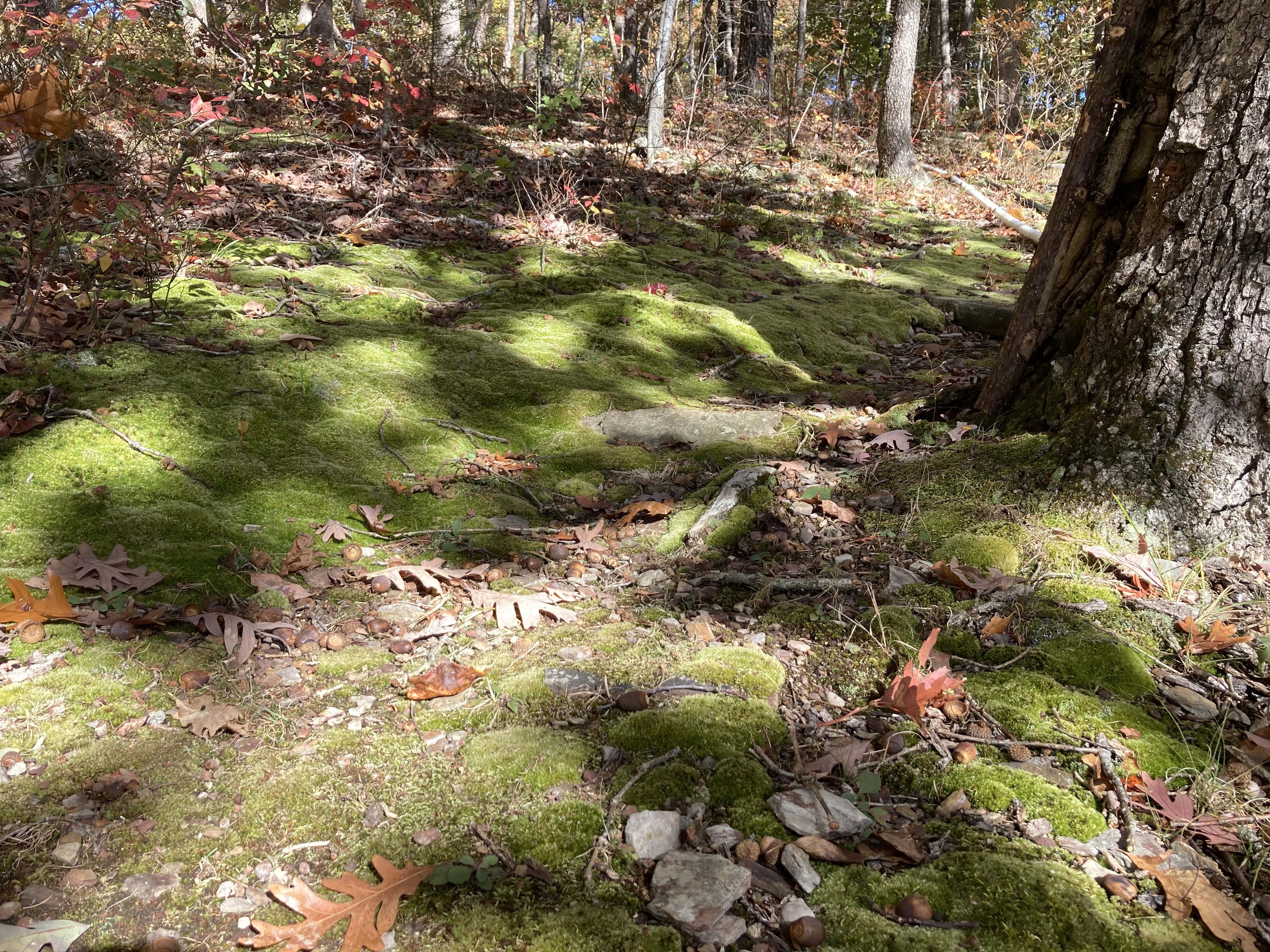Moss
Contact
University of Arkansas System Division of Agriculture
Cooperative Extension Service
2301 S. University Ave.
Little Rock, AR 72204

Moss
I like all the green growing things, even if they are not big or have showy flowers. Mosses definitely fit into that category. They are always present and rewarding if you are willing to appreciate nature on a lilliputian scale.
Botanists classify the 12,000 species of moss as bryophytes. These are primitive plants with their origins tracing back about 470 million years, making them one of the first land plants. They didn’t originate photosynthesis but ancient moss ancestors were the species that brought it onto to dry land. Many species of moss have worldwide distribution and are found on all continents.
Mosses have leaves and stems and a rudimentary kind of root system (called a rhizoid) mainly used for anchoring the plant in place, not taking up water and nutrients. Moss leaves are a single cell thick and lack a protective epidermis, making them dependent on moisture absorbed from the air to maintain their turgidity. Because of this reliance on ambient moisture conditions, they are most often found in moist, shaded locations. In the wintertime they flourish because the cooler temperatures reduce water loss and the humidity – a function of temperature and the amount of moisture in the air – often approaches 100 percent.
Moss leaves, themselves often quite tiny, are spirally arranged around the tiny stems which contain the earliest known example of a vascular system. Mosses were long thought to not contain a vascular system but it is now known that theirs is in a non-lignified form, unlike the hardened tubular conductive tissue of higher plants.
Mosses usually grow on some bare patch of ground, perched atop a rock or – as they tell the Boy Scouts – on the north side of a tree. Minerals are absorbed through the leaves from splashing raindrops. If rainfall doesn’t come in a timely manner the plant shrivels up and looks dead, only to revive quickly when rehydrated. Mosses are tough – some have been revived after storage for over a century in a dry herbarium cabinet.
But the biggest feature differentiating these primitive plants from higher plants is how they reproduce. They reproduce by spores like ferns but their mode of reproduction is so very different. In higher plants (including ferns) and animals, the normal complement of chromosomes in the cell nucleus is a paired set of two chromosomes (the 2n or diploid state), with one of each being copied from the male or female parent.
The more primitive mosses do it differently. The moss plants we see growing in the woods have a single, unpaired chromosome (the 1n or haploid state). They only unite with a compatible partner during reproduction to create the 2n. When the 2n zygote matures it produces 1n spores and releases them from its reproductive capsules.
I’ve made several halfhearted attempts to identify my moss photos to the species level but find it difficult. Well, perhaps impossible. To do so with accuracy one needs a good live specimen – preferably with capsules present, a well-illustrated regional field guide, a hand lens and a lot of patience. And any given area can have a lot of moss species. Bryologists – people who study mosses – have scoured Hot Springs National Park and identified more than 80 species growing there, so learning to appreciate green buns of moss without worrying about their actual name makes life easier.
Mosses have been a part of garden design in Japan and China for centuries but it has only been in the past several decades that moss gardening has taken root in this country. They can be grown on the ground like any groundcover but if they are in an area that gets covered with leaves or where weeds grow well, they usually will not survive. They are especially well suited for use between stepping stones, on north-facing slopes or cool shaded nooks, but weed completion and leaf litter must be carefully avoided.
Hand sprinkling will keep them sufficiently moist during most of the year but in summer months extra care will be needed to keep them from going dormant. But don’t worry, even if they look dead, moss will revive with the first rains. The best choice of adapted moss is to find patches growing in your own garden and then transplanting clumps of it to similar environmental niches.
